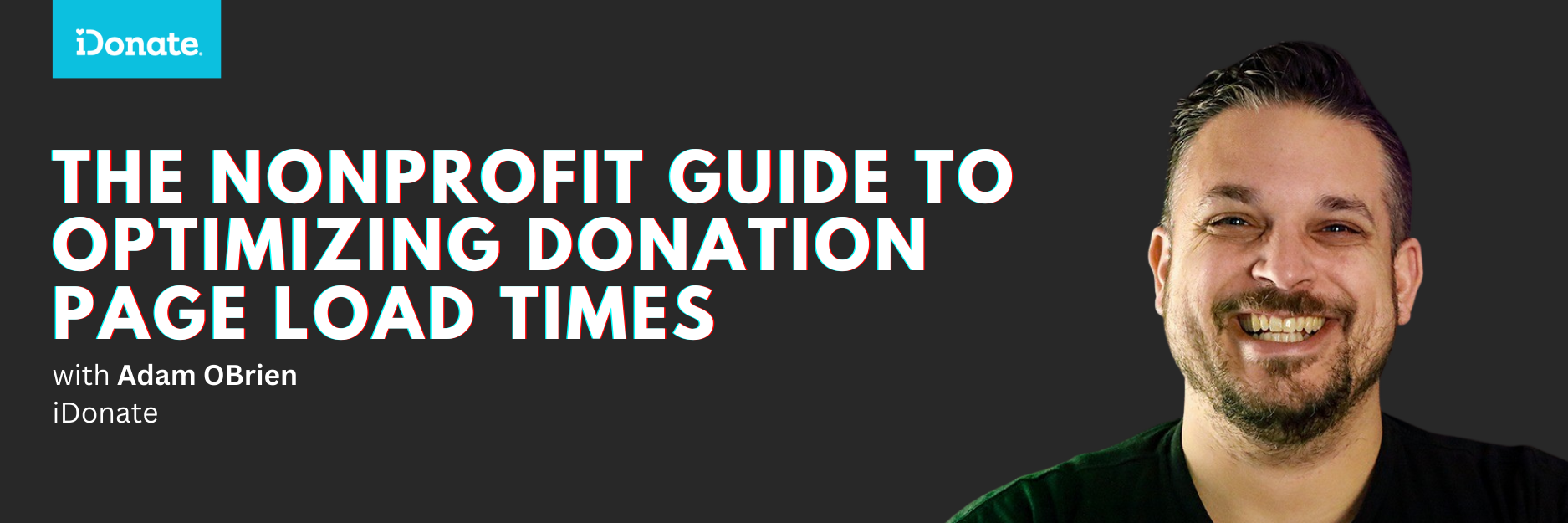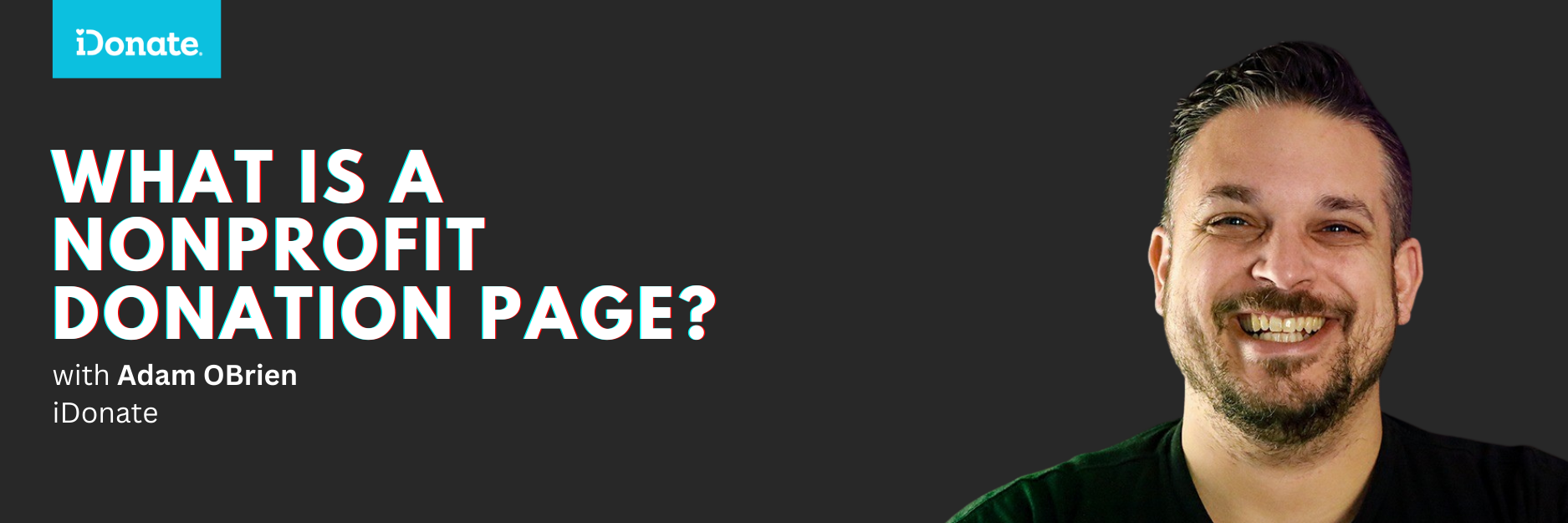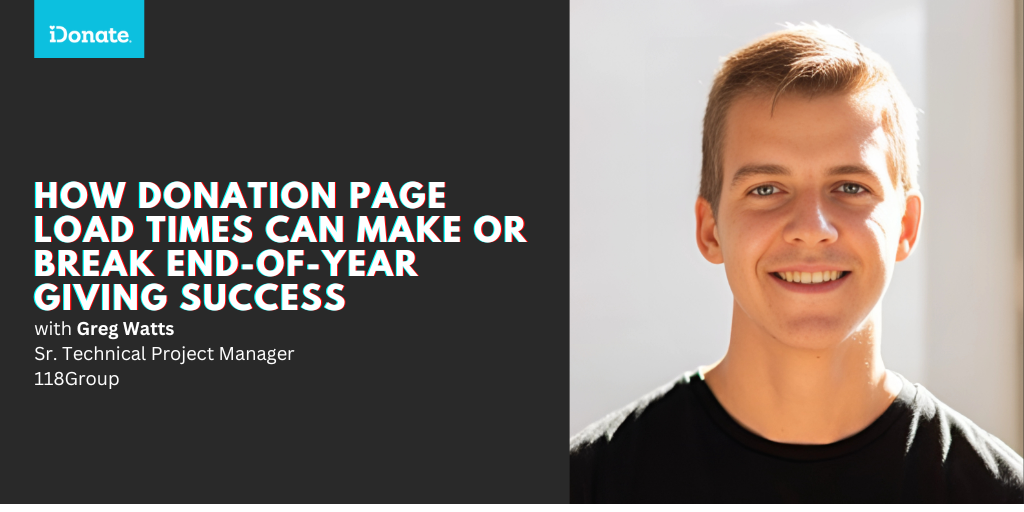8 A/B Tests That Convert Visitors into Donors
Optimizing your donation pages is equally important as optimizing the marketing and communications activities that lead people there. Your...

Use no-code tools to quickly build donation page variants, launch A/B tests, and get clear results that help you drive more donor conversions with a single platform.
New to online donation pages for your nonprofit? Start here.
Donation page A/B testing - no science degree needed.
Keep your donation page loading fast - and drive higher conversions.
5 min read
 Adam OBrien
:
May 21
Adam OBrien
:
May 21

Nonprofits rely heavily on online donations for funding their initiatives, making the performance of their donation pages crucial.
Slow loading times can significantly impact user experience, leading to frustration and potential abandonment of the donation process.
With attention spans decreasing and expectations for seamless online interactions rising, nonprofits must prioritize optimizing donation page load times to ensure a smooth and efficient donation experience for donors.
A faster page load not only enhances user satisfaction but also increases the likelihood of successful donations, ultimately supporting the organization's mission and goals.
Simply put, the faster a donation page loads the more likely a conversion is to happen.
Let’s break what that looks like in detail from a broad numbers perspective.
When comparing page load times vs. goal conversion rates, there’s a direct correlation between faster load times and higher conversion rates:
Worth noting, when pages hit a 4-second load time, the conversion rate plummets by more than 450% when compared to a 1-second load time.
According to M+R’s 2024 digital fundraising benchmark reports, nonprofits are seeing a 2.7 second donation page load time on average:
Let’s use some quick math to demonstrate the potential impact that donation page load times can have on your nonprofit using the following examples across a 1,000 visitor sample size:
Keep in mind, this is a hypothetical exercise – but based on the numbers outline above, and taking a nonprofit industry average donation page load time of almost 3 seconds, that equates to $10,000 dollars being left on the proverbial table (or, a 272% drop off).
That’s a lot of fundraising revenue to miss out on for any nonprofit – and it’s something that can easily be prevented with the strategies and tips outline in this guide below.
Exploring the technical side of websites might seem daunting, but we've got four simple yet effective strategies (with supporting resources, too!) that can quickly enhance your donation page loading speed.
One of the quickest (and often easiest) ways to optimizing donation page load times starts with making sure website code and images are properly compressed.
Removing unneeded spaces and commas from your website code, also referred to as minifying, can typically be handled through default configurations or plugins (depending on the website platform used, such as WordPress or Webflow).
Here's two resources that will help optimize code:
Next up: compressing your site’s images.
Typically this means setting images on your site to have the lowest possible file size while still maintaining an acceptable image quality.
Here’s a few tips on how to make that happen:
What is a content delivery network, or CDN?
A CDN is a network of servers worldwide that delivers web content to users efficiently, reducing load times by serving content from the nearest server and enhancing website performance and security.
CDN providers like Cloudflare, Amazon CloudFront, or Google Cloud CDN are all widely used vendors that come with tested, and verified, service.
For a large amount of nonprofits, WordPress is still the go-to for websites.
It makes sense, too, as WordPress offers so many great out-of-the-box templates for sites and is incredibly flexible when it comes to plugins + optimizations to really give unique, personal website experience that matches a missions ethos.
However, there’s plugins that are poorly coded, out of date, or simply conflict with other parts of your website and ultimately put a large strain on donation page performance.
Here’s 3 things to consider:
Website caching allows nonprofits to decrease website page load times by storing frequently accessed elements or data temporarily, reducing server load and speeding up webpage access.
This ultimately improves the supporter and donor experience on the site, decreasing page load times and directly impacting donation conversions.
Where we’ve already covered the 4 short-term wins you can deploy to impact donation page load times, there’s also 3 larger considerations that could have a major long-term impact on donation page, and website, performance for your nonprofit.
Finding that your donation page, or even your main site, are dragging in load time?
Free tools like this website speed test from Pingdom will give you quick insight into the health of your donation pages.
If you do find that your hosting vendor is slower then desired, it may be time to consider switching.
Here's the 3 most common hosting types offered by 3rd party providers:
You’ve already heard us mention staging servers, but here’s a high-level rundown.
A website staging server is a separate environment where developers can test and preview website changes before deploying them to the live website.
It allows for experimentation and troubleshooting without impacting the live site's performance or donor experience – something that is crucial for nonprofits.
In general, the higher the number of HTTP and Database requests your website makes, the slower load times will be.
Here’s why.
Reducing external HTTP requests helps to minimize the time it takes for a webpage to load by decreasing the number of resources the browser needs to fetch from other servers.
Minimizing database requests helps improve website performance by reducing the workload on the server and decreasing the time needed to retrieve and process data or information from third-party tools and/or services, resulting in faster page load times and a smoother donor experience.
Want to get a quick look at your website’s external calls? This blog does a great job outlining the steps to quickly view external calls using Google Chrome’s developer tools.
Achieving success in optimizing donation pages takes time and resources, but the results prove it's a valuable investment for now and the future.
Looking to level up your donation page performance? We've got a team of website (and fundraising) experts ready to talk.

Optimizing your donation pages is equally important as optimizing the marketing and communications activities that lead people there. Your...

What this article covers What is a nonprofit donation page? The Anatomy of a donation page The donation page header Your nonprofit's distinct...

As the end of the year approaches, nonprofits are gearing up for one of the busiest and most critical fundraising seasons: the year-end giving push....